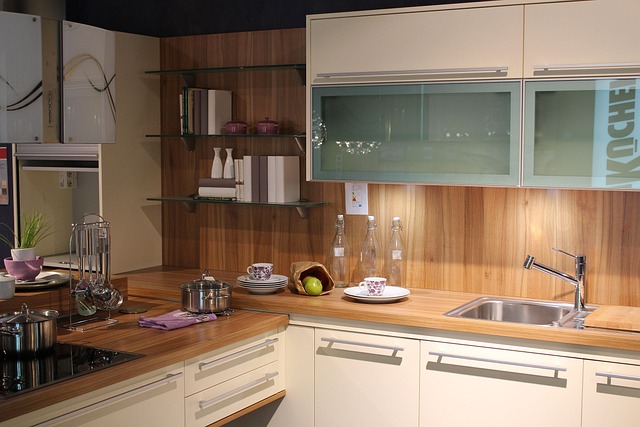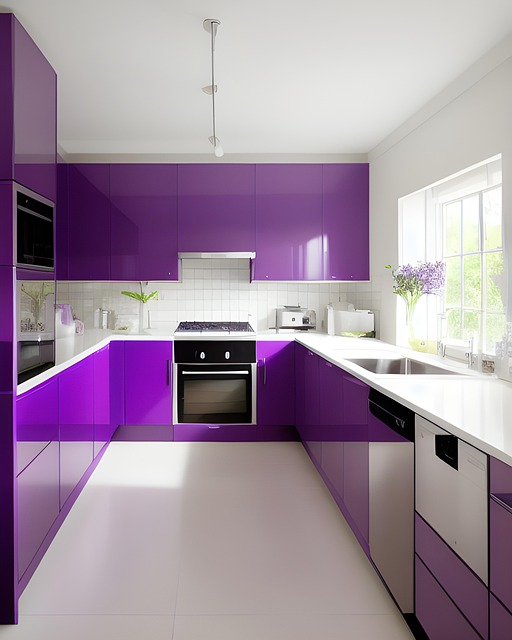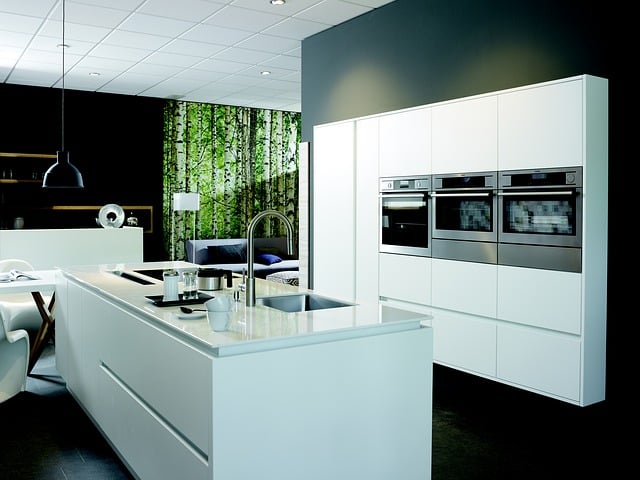Revolutionize Your Compact Kitchen with Custom Cabinetry Design

Designing custom cabinets for a compact kitchen requires understanding and maximizing unique layout…….
Kitchen Remodeling for Small Spaces: Maximizing Functionality and Style
Introduction
In urban centers and residential areas where space is at a premium, the challenge of remodeling small kitchens into functional, stylish, and comfortable spaces has become increasingly significant. This article delves into the nuances of kitchen remodeling for small spaces, exploring the design considerations, technological innovations, and economic implications that shape this niche within the broader field of interior design and construction. Readers will learn practical strategies to maximize space, integrate storage solutions, and enhance the aesthetic appeal of their compact kitchens.
Understanding Kitchen Remodel for Small Spaces
A kitchen remodel for small spaces involves reconfiguring or updating an existing kitchen within a limited area. It encompasses careful planning to optimize space, incorporate modern appliances, and ensure the workflow is efficient. The core components include cabinetry, countertops, appliances, lighting, storage solutions, and color schemes that collectively create a functional and inviting environment. Historically, kitchen design has evolved from purely utilitarian spaces to multi-functional areas where design and functionality coalesce. In small spaces, this evolution is both a challenge and an opportunity for creativity and innovation.
Global Impact and Trends
The global impact of small space kitchen remodeling reflects a growing awareness of the importance of efficient living. Trends such as minimalism, multifunctional design, and sustainable materials are shaping this field. In regions like Japan, where land is scarce, micro-kitchens are a way of life, influencing international design trends. European kitchens often feature compact yet ergonomic designs, while North American remodels focus on space-saving appliances and storage innovations. The global market for small space kitchen solutions is expanding, with a significant emphasis on bespoke, space-efficient designs.
Economic Considerations
Economically, kitchen remodeling for small spaces presents unique opportunities and challenges. The demand for compact living solutions in urban environments drives investment in this sector. Market dynamics indicate a rise in the cost of real estate, pushing homeowners to invest in their current homes rather than move. This trend has led to an increase in spending on kitchen renovations, which is expected to continue as demographic shifts favor smaller households. The role of small space kitchen remodeling within economic systems is significant, as it contributes to job creation in design, construction, and manufacturing industries.
Technological Advancements
Technological advancements have revolutionized the way we approach kitchen remodeling for small spaces. Smart appliances, space-saving mechanisms like pull-out cabinetry, and modular designs that allow for customization are just a few examples. Innovations in materials science have led to the development of lightweight, durable, and sustainable options that fit within the constraints of small spaces without compromising on style or functionality. In the future, we can expect even more intelligent solutions, including integrated home assistants and energy-efficient systems that enhance the kitchen experience.
Policy and Regulation
Policies and regulations play a crucial role in shaping the kitchen remodeling landscape for small spaces. Building codes, safety standards, and zoning laws must be adhered to, ensuring that renovations are both compliant and practical. In some regions, there are incentives for green building practices and energy-efficient appliances, further influencing design choices. The legislative framework also includes guidelines for accessibility and inclusivity, ensuring that kitchen remodels cater to diverse needs.
Challenges and Criticisms
One of the primary challenges in kitchen remodeling for small spaces is balancing aesthetics with functionality while staying within budget constraints. Criticisms often revolve around the potential for clutter and the difficulty in incorporating modern amenities without overwhelming the space. To address these issues, designers and architects must employ creative solutions such as built-in appliances, multi-purpose furniture, and clever storage options. Strategies like maximizing natural light and adopting a minimalist approach can mitigate some of these challenges.
Case Studies
Several case studies demonstrate the successful application of kitchen remodeling for small spaces. A New York City apartment transformed a galley kitchen into an efficient L-shaped design, maximizing cabinet and counter space. Another example is a compact London flat where a bespoke island serves as a dining area, prep space, and additional storage. These case studies highlight the importance of thoughtful design and the potential for creating functional and beautiful small space kitchens.
Future Prospects
The future of kitchen remodeling for small spaces is bright, with emerging trends pointing towards even more innovative solutions. The integration of smart technology, sustainable materials, and space-efficient designs will continue to evolve. Demand for compact yet sophisticated kitchens in urban environments is likely to increase, driving the industry to focus on creating spaces that are not only functional but also reflect the homeowner’s personal style. Strategic considerations will include adaptability to changing needs and the integration of technology to enhance the living experience.
Conclusion
In conclusion, kitchen remodeling for small spaces is a multifaceted endeavor that requires careful consideration of design, functionality, and economic factors. The global impact of this trend reflects a broader shift towards more sustainable and efficient living solutions. Through innovative use of space, technology, and materials, the future of compact kitchen designs holds great promise for homeowners and designers alike.
FAQs
Q: How can I maximize storage in a small kitchen space?
A: Utilize vertical space with wall-mounted shelves or cabinetry, opt for pull-out drawers for more accessible storage, and consider multifunctional furniture like a kitchen island with built-in storage.
Q: What are some sustainable materials I can use in my small space kitchen remodel?
A: Eco-friendly options include bamboo, recycled glass or metal, cork, and reclaimed wood. These materials are not only sustainable but also stylish and durable.
Q: Can smart technology be integrated into a small kitchen design?
A: Absolutely! Smart appliances, voice-activated assistants, and energy management systems can all be incorporated into a small space kitchen to enhance functionality and convenience.
Q: How do I choose the right color scheme for my small space kitchen?
A: Light colors can make a space feel larger, while strategic use of accent colors can add personality. Consider the natural light available and the mood you want to create in your kitchen.
This comprehensive guide provides insights into the multifaceted nature of kitchen remodeling for small spaces, offering both practical advice and future-focused perspectives on this growing design trend.

Designing custom cabinets for a compact kitchen requires understanding and maximizing unique layout…….

Combining kitchen and dining areas in smaller spaces creates an open, connected environment that fos…….

Open shelving in compact kitchen designs offers functional and aesthetic benefits, promoting minimal…….

Reflective surfaces like mirrors are strategic tools in compact kitchen design, enhancing natural li…….

Sliding and pocket doors are ideal for achieving an efficient kitchen layout by saving space, enhanc…….

A compact kitchen design maximizes small spaces through strategic planning, incorporating space-effi…….

Under-cabinet lighting is a game-changer for small kitchen remodels, boosting functionality and aest…….

Homeowners with cramped kitchens can transform their spaces through innovative storage solutions lik…….

In compact kitchens, budget-friendly kitchen upgrades focusing on vertical storage maximize space an…….